BUSINESS & ECONOMY
Four ways the planetary crisis is impacting mental health
Published
2 years agoon
By
Editor
South Asian region is excessively wide-open to climate change effects; comprising higher temperatures, sea-level rise, inconsistent rainfall, amplified occurrence and harshness of extreme weather incidents, increased overflow and glacial melting. It is anticipated as the nastiest impacted regions by climate change and global warming because of geophysical environment in addition to the socio economic and demographic backwardness of population. There are millions of people bearing the burden of these catastrophes due to reliance upon climate sensitive segments such as forestry, fishing and agriculture for their daily needs. Biodiversity, human health, food security, energy, water, agricultural output as well as coastal arrangements are going to imperil causing increased migrations ultimately escalating pressures over main towns (Hans, 2020).
With the help of mainstreaming climatic resistance in to community development policies and taking along confirmed worthy development practices in to resilience approach conveyance as well as through integrated aptitude towards it can easily help to accomplish uneven methods to advancement and combating negative outcomes of climate change. It is an urgent necessity for domestic, regional and global level to mitigate and take adaptive measures for facing the harsh veracity of climatic change. South Asian states “as one bloc” should make constructive negotiations via international organizations. To achieve this, further regional considerations, cooperation and mutual work is required.
This article attempts to assess the over-all condition of South Asian climatic change and role of national and international organizations in this regard. It also suggests the adaptation based actions and other recommendations to bring improvement. For this, it has been divided into three sections with the explanation below;
Section-I Climate Change in South Asia; Particular Records and Evidences
It is expected that South Asian region will experience 2-6 degree of Celsius increase in the temperature by the ending 21st century era (Rabindranath, 2002). Heating up of roughly 0.21 Degree-Celsius every ten years is anticipated for coming twenty years (Jayant, 2007).
Past and future climatic aspects and alterations in temperature are shown here. (Figure 01 and Figure 02)
(Figure-01) Current/Past Köppen Climate Classification map for South Asia (1980-2016)
(Figure-02) Predicted Köppen Climate Classification map for South Asia (2071-2100)
According to the experts, South Asia is already suffering the wrath of climate change. There are influences on economic enactments of the South Asian states mainly and the livelihoods of thousands of folks of this area are affected and even in the near future this situation will be worst. South Asian region is projected as the most awful affected global regions because of climate change, and this is due to various reasons: like geo-climatic surroundings, excessive dependence on agriculture, socio-economic and demographic credentials etc. (Nazrul Islam, 2014).
Yohe et al., (2008) reflects that biodiversity, coastal ecosystem, food, human health, water resources, land deprivation etc. are deliberated as extremely vulnerable for this region on basis of climatic-change. Cyclones, famine, overflows, storms etc. are in the lives of millions of South Asians. On the other hand, the severity and intensity of these incidents in the recent times are increasing badly which is very worrisome. Scientists discourse that because of inclusive climate-change, incidences like these, will increase in coming era and take along a lot of despair for lots of folks. In this region, forthcoming years in several parts mainly in Maldives, islands or coastal areas of India and Sri Lanka, Southern coastal localities of Bangladesh are totally unreliable. Evidences illustrate that rise of 1 meter in the sea-level may cause an economic cost of 1259 million dollars in India only and this is almost equal to 0.37% of the total GNP (Jayashree, 2007). Total GDP loss since 2010 to future projection till 2100 has been shown here (Figure-03). Besides this economic loss, another worst consequence will be the incursion of ‘environmental refugees’ (term proposed by Lester Brown in 1976) in the overburdened hubs of South Asia, that is going to jeopardize the environmental, commercial, as well as societal balance in this region.
(Figure-03) Total Economic cost (GDP Loss) of Climate Change, South Asia
South Asian region is susceptible to various climate change hazards which are linked with its geography, population, economic infrastructure etc. These are;
Glacial Melting: The peaks of Himalayas are sustenance for almost one and half billions of population, living in flood-plains of several rivers flowing from it. Around 10 percent rivers of Himalaya emanate by water-melting of snow peaks, and is very indispensable for endurance during dry spells (ADB, 2009). But due to growing temperatures, the Himalayas’ ice mass is waning more speedily than universal average, and it will badly impact the Basins. Water scarcity during summer-months, that denotes approximately 61% of the yearly current, can impact this zone at the crucial time while people want water for the purpose of cultivation or hydro-power in addition to others. The change in snow melting and snow covering patterns will be affecting river flow in coming term (ADB, 2009). As per the studies of International Centre for Integrated Mountain Development, at hand are possibly twenty unsafe glacial water bodies in Nepal as well as twenty-five in Bhutan, which pretense hazard of upsurge overflows towards remote populations (Ives et al., 2010).
Land Erosion: Increase in floods, storms, surges, rainfall, rise in the sea-level besides anthropological activities are reasons of deteriorating destruction in South Asian zone. Over-grazed rangelands, coastal lands and stripped highlands got pretentious specifically. 26.5 percent of coast-line is disposed to corrosion in India, by around 450 hectares of mass land lost on yearly basis. Coastline of Sri Lanka is also matter to substantial erosion in specific areas, whereas the mountain state is susceptible to the recurrent landslides. Mountain communities in India, Bhutan and Nepal, are facing landslides regularly (Hans, 2020). Economies, habitats, agriculture and narrowing livelihood prospects, especially of the country side underprivileged are getting damaged. In South Asia, shoreline besides foothill territory erosion is going to worsen in years ahead because of extreme weather events occurrence due to climatic change.
Rising Sea-Level: Stretched plus comprehensively settled coastlines of the region are extremely in danger of sea-level increase. Only in state of Bangladesh the level of sea is anticipated to upsurge 46 cm by the year 2050, affecting 10 to 15 percent of land mass and assessed 35 million people (GOB, 2007). It has been also projected that sea-level will grow by 15-39 cm by 2050 in India, placing major cities including Kolkata, Kochi as well as Mumbai at menace. A great fraction of Coastal line of Sri Lanka stays under 1-meter overhead of the sea level, which can get sunken due to high waves, alongside its transportation substructure. Average altitude of Maldives’ landmasses is 1.50 meters above the level of sea, therefore survival is in threat which could be triggered by large scale migrations, having ripple impacts across the borders. Rise in the sea level gives path to saline water incursion, which possess risk for supply of drinking water, agriculture and aquatic lives. Above hundred million hectares got affected in Bangladesh, and whole of Maldives got wedged via salt-water meddling because of rising of sea-levels. It also came under forecast that Thatta and Badin-two historical cities in Sindh, Pakistan will get swallowed by the sea till 2050 because the sea is encroaching eighty acres of land per day. Sea-level rise has been shown covering 21st century over here. (Figure-04)
(Figure-04) Anticipated sea level changes by the end of 21st Century for Three Emission Scenarios based on Geophysical Fluid Dynamics Laboratory Model Results
Floods: Major zones of India, Bangladesh, Sri Lanka and Nepal are inclined to recurring floods because of low elevation, heavy monsoon rains and blocked natural drainage. Melting of glaciers and rising of seas levels with maximum chance of storm surges and flooding caused by climatic change can put state of Bangladesh at specific risk, because of three large river systems’ convergence, side by side assembling the rainwater of an area twelve times larger than the country. In Bangladesh for nine months, floods could last. Abrupt monsoon rains trapped South Asian region improvised to deal with the floods, which affected almost thirty million people of India, Bangladesh and Nepal in 2007. Approximately 1.1 million homes and 11 million people got damaged and displaced during 2010 floods in Pakistan (Hans, 2020). Recent flood in 2022 has also caused a huge loss to Pakistani nation.
Cyclones: Cyclone Amphan, a strongest storm is one of the recent examples which slammed into India and Bangladesh in May, 2020. It ended up with 3 million evacuees and damaged around 2 million homes there. People of India, Bangladesh and Sri Lanka were displaced at large scale. Such stormy weathers are recurrent shift triggers. Back in year 2009, 2.3 million Indians and nearly 1 million of Bangladeshi people were displaced by Cyclone Aila (Kugelman, 2020).
Section-II National, Regional and Global level Climate Actions in South Asian
National Level Efforts: Laws and policies are made for mitigation and adaptation against climate change by governments across South Asia. In 2005, after Indian Ocean Tsunami had affected millions of people, Maldives had developed a plan to relocate their population towards higher grounds and now they plan to build new islands altogether. But issues like corruption, not enough funds and poor infrastructure are great hurdles in the enforcement of these policies. Currently national initiatives range from basic to proper proactive measures like plantation, constructing concrete houses at coastal areas etc. In India, action plan promotes energy efficiency, renewable energy, water management and sustainable agriculture. For reducing migration risks elevated from climate issues, Mahatma Gandhi National Rural Employment Guarantee Act (MGNREGA) guarantees to provide hundred days of paid-employment yearly to the wages manual worker. 10 billion US Dollars are given to 60 cities for developing infrastructure by Jawaharlal Nehru National Urban Renewal Mission, so that they can accommodate migrants from other parts. Moreover, the program Afat Vimo gives insurance for losses such as of earthquakes, cyclones, landslides or floods etc. In the meantime, there is a climate change policy in Pakistan for addressing migration due to climate severity, national food security policy for making agriculture productive and resilient to weather variations. Bangladesh is also initiating its plans under National Strategies on the Management of Disasters and Climate-Induced problems. Sustainable productions of fruits, forests as well as fish resources are being developed. The state is forerunner of this region due to putting efforts for integrating climate-change issue in to interagency structure of its government. Policies are made for establishing climatic change organization, governmental advisory body and planning commissions in every ministry.
States of this region emphasized sustainable farming progression and put efforts for reducing water-resources’ vulnerability besides aquatic threats for addressing adaptation community based approaches are integrated with institutional systemic mitigation and adaptation (MOE, 2011a, 2011b; MOEF, 2012a, 2012b; GOIRP, 2003; RGOB, n.d.; ROM, 2001; GON, 2011a; 2011b). Bangladesh set its objective to ensure food security from 2010 to 2015. Bhutan tried to promote adaptation in hydro power and agriculture sector by creating awareness and developing reliable capacity for facing climatic threats in future. India has enhanced infrastructure growth to ensure lesser impacts of weather disasters. Objective of Maldives’ government till 2020 was to assist adaptation in coastal settlement, tourism, health, water resources, food, agriculture, coral reef, fisheries as well as infrastructure development sectors. Nepal’s Action plan deals with food security related issues. Pakistan is aiming to guarantee foodstuff, water also energy-security for minimizing natural disasters’ impacts till 2030. Whereas Sri Lanka’s resilience to climate change programs focused on water resources, fisheries and agriculture segments during 2011-2016.
But despite of these policies and plans, actual implementation cannot be seen. Indian climate change action plan faced criticism due to lack of strategies for executing it. Institutions have failed to achieve their set agendas at a large scale. In Pakistan, situation is same as well. As their policy which aimed for an implementation frame work, actually did not implemented adaptation plans. Although capital has passed climate related laws but have not focused on enforcement. Provincial officials lacking technical or financial capacity faced challenges too. In addition to this negligence, Bangladesh even of it pioneer status, does not possess a national climate change policy and is facing many threats due to inefficient frame work.
Regional Level Efforts: For combating environmental degradation concerns, regional cooperation got initiated during 1987 in 3rd South Asian Association for Regional Cooperation (SAARC) Conference. It was recognized there that natural disasters of this region are strongly linked with climatic change. For this purpose, “Regional Study on the Causes and Consequences of Natural Disasters and the Protection and Preservation of Environment-1991” as well as an additional reading over “Greenhouse Effect and its Impact on the Region-1992” was initiated. It recommended measures of sharing experiences, information and awareness regarding climate change, transferring technological skills etc. For revising those studies, in 1997 SAARC-Plan of Action for Environment got implemented. This made sure the formation of Regional-Centers of Excellence, like SAARC Meteorology Research Centre (SMRC) made in Dhaka-1995, SAARC Coastal Zone Management Centre (SCZMC) prepared in Male-2004, SAARC Disaster Management Centre (SDMC) built in New Delhi-2007 in addition to SAARC Forestry Center present in Bhutan lately. Centers provide reliable support to institutions for bringing the issues of climatic change or calamity risk-super vision in this region. SAARC also executed South Asia Disaster Knowledge Network from 2009 to 2012, financed by World Bank’s Global Facility for Disaster Reduction and Recovery. It shared information and awareness regarding risk minimization in region (Krampe & Swain, 2018).
As per SAARC, it is chief obligation of national governments to implement the Action Plan. Under regional cooperation, this Plan demands for effective mechanism which will cooperatively work with existing institutions according to the given guidelines and directions. Different Workshops like Science and Technology Solicitations in calamity menace Reduction Workshop-January, 2008-New Delhi as well as marine and coastal Risks in Goa-May 2008 highlighted the need of exchanging information and researches about climatic change adaptation among all the states in South Asia.
Climate Action Network-South Asia is also a civil society organization comprising more than 200 associations. It works to promote sustainable development and protects environment, by linking research, policies and work based on action for addressing adverse impacts of climatic disturbance. CANSA remain at forefront to represent Southern views at International Climate-negotiations.
Global Level Efforts: Various environmental conventions, agreements, treaties, legislations and protocols like the UN Conference on Human Environment-1972, Our Common Future-1987, the Earth Summit-1992, the Kyoto Protocol-1992, Johannesburg Summit-2002, Bali Conference-2007, Poznan Conference-2008, Hyogo Framework for Action-2005 to 2015, Paris Agreement-2015, Asia-Pacific climate change adaption information platform-2019 were joint efforts to combat environmental hazards and minimize impacts of climate change globally.
International Union for Conservation of Nature-1948, United Nations Environment Program-1972, Intergovernmental Panel on Climate Change-1988, Global Environment Facility-1991, Earth System Governance Project-2009, World Nature Organization-2010 are some of the international-level organizations working for protecting ecology and environment world-wide. These all are based on framework of resilience based policies, early warning systems, disaster threat lessening tools’ usage, techno-legal regime for development practices, susceptibility and hazard calculations, land-use preparation, and augmenting official and lawful volumes to be adopted by nations and communities to combat environmental degradation security challenge. Integration of information about disaster risk management and enforcement of that information for bridging the gap of dealing with risks during environmental alterations is stressed by such international-level actions. The United Nations Framework Convention on Climate Change (UNFCC), under Kyoto Protocol aims that developed countries will stabilize discharge of greenhouse-gases in addition they would be provided by solutions and tools for such maintenance via promoting Clean Development Mechanisms in the developing countries. Another major contribution of the Convention was Bali Action plan for enhancing adaptation in risk management domains.
Natural tragedies with the menacing influences over subsist and their means of support are increasing, which basically shifted the paradigm towards disaster-management of South Asian regions. This shift is to all-inclusive management of disasters reduction covering its entire phases from only one post disaster reprieve and reintegration. Disaster Risk Reduction (DRR) is the main focus comprising preparedness, prevention and mitigation measures. These programs are related to hydro-meteorological disasters like flood protection, alternative livelihood initiatives, droughts proofing, saline embankment or bio shields etc. are same like programs of climate change adaptation. Therefore, integration between both of these programs is necessary. It will augment developments by increasing relevancy with the contemporary challenges.
Even after such efforts, human population is facing severe security challenge of environmental degradation which is leading towards survival hardships. On the contrary of all action plans, there is no legal framework for climate induced displacement and even there is no consent based definition of environmental refugee. However, International Organization for Migration has made a framework product on dealing with migrations due to climate change after research has been done in Bangladesh, Sri Lanka and Nepal. Red Cross and World Bank have also offered scientific and technical assistance for catastrophe risk-management agendas in states here. Region’s Water-Initiative by World Bank gives analytical and technological help for forecasting floods in Ganges Basin. Climate adaptation and resilience for South Asia is another venture which provides funding for development. Bilateral donors, UK’s National Weather service and aid-agency also contributes in developing early-warning structures for climatic susceptible populations of the region.
Section-III Solutions based on mitigating and adaptive methods to combat climatic change impacts
National, regional and international efforts are encouraging but these are not sufficient. There is much more the local and global community should do for helping reducing exposure of region to climate vulnerabilities.
Here are some suggestions by which the severity of climate change impacts can be minimized:
1.Carbon emissions should be reduced and environmental friendly, sustainable technologies with less carbon-emission should be used. Due to emission of greenhouse gases via thermal plants, renewable energy sources are required to be used. All governments should make re-forestation their priority and ensure sustainable use of forests, natural resources and specially water.
2.More livelihood opportunities should be promoted in the non-agrarian domains. As it’s the major income source of a lot of South Asians and though a vulnerable segment. Therefore, farmers and other workers are susceptible to weather alterations. International organizations can donate for vocational trainings and skill enhancement programs for making millions of population able to work in other sectors like electronics, retails, telecommunications etc.
3.Provincial authorities should be empowered to tackle climate related disasters. In this region provincial governments lack requisite resources and expertise to combat impacts so they should be trained and funds should be provided to them. Decentralization is not enough when there is no implementation of policies at local or ground level. Analysts identified it very critical for the case of Pakistan, Nepal and Bangladesh (Parry et al., 2013, p. 33; Regmi & Bhandari, 2013; TAF, 2012). Sponsor trainings and awareness programs as well as check and balance by federal officials can solve this issue.
4.United States should assimilate climate change adaptation and mitigation assistance in to administration’s main Asia Policy and Indo-Pacific strategies. US officials consider South Asian region as fragment of Indo Pacific region therefore, aims for making strong ties with this region under the policy. Although cooperation based areas are less in number mainly based on counter-terrorism or maritime joint venture. US should allow its American Development Bank for investing in sectors like sustainable agriculture or disaster resilient structure for minimizing climate-change effects.
5.There is lack in financing and funding and this is a major reason for working on adaptation based measures against climate threats. Policies regarding it are hindering the situation as Pakistan can be taken as an example which primarily focused on external financing and not promoting internal one to deal such threats (GOP, 2012). There were bilateral donors helping like in 2009 almost eighteen donors assisted Nepal in climate change adaptation and same happened in Bangladesh, but implementing the plans into firm actions had been often seen here (CCNN, 2011; Alam et al., 2011). For overcoming these kinds of hurdles, internal as well as external parties should donate for the cause to protect whole region from adverse impacts of climatic severity.
6.Regional cooperation is a great need of this time to jointly combat the threats of climatic change. The region is rife with many tensions and strains among Pakistan and India, Afghanistan and Pakistan as well as India and other smaller neighboring states. Intra-regional trade is also less as compared to other regions and non-existence of commercial collaboration further deprives it from solidification and mutual path towards prosperity. In addition to this, the main regional body SAARC is somehow paralyzed in taking actions because of Pakistan-India stress full diplomatic relations. Diplomats from neutral states and other external actors should therefore initiate Track-II diplomacy and arrange multi-lateral forums for helping to build consent based joint plan, by which climate change threats can be addressed. Programs like Dhaka Declaration on Climate Change and SAARC Food Security Reserve should be implemented which had languished for years. These can promote regional cooperation and capacity building as well as can reserve food grains for communities exposed to climate threats during disasters.
7.Furthermore, governments, NGOs and other civil organizations of the region should play their role by disseminating mass awareness regarding climatic change, making people encourage to go for diverse means of livelihoods and different patterns of consumption with the help of media, education or social movements, make them motivated for applying adaptation and mitigation based strategies to combat climatic change impacts.
CONCLUSION
South Asian climate related security-risks demand for governments to step up and international communities to support the cause and save the region. Now is the time to better understand future climate anticipations’ implication for ongoing expositions. Though the efforts of integrating stakeholders and diverse structures of institutes in climatic change scenario are being made and many international level treaties, agreements or mega projects are planned but outcome is despondent. There is a lot more to be done. Responsibility lies on major powers-global policemen to compensate developing states by initiating development grants, projects implementations and infrastructure betterment.
COVID-19 crisis is a lesson and window of opportunity for all to re-form national and international politics according to the liberal stand point of cooperation. In climate change context, optimistic attitude is very much needed as radical change is always possible. Re-alignment of traditionalists with re-invention of liberal sustainable development plan as well as constructing innovative ideas, discourses and identities will definitely enable International relations for research in coming many decades of national and international level politics.
This research article confirms that paradigm shift is compulsory for confronting non-traditional security threats like climate change. Focusing environment as a referent object is way too necessary now for ensuring over all security and stability of this region as well as whole world. Globalized world and trans-national boundaries ask for more cooperative relations not only to promote trade or production but to fight mutually against every threat. Therefore, beside states, international community has to play its part for combating the contrary influences of climate variation. Individual level awareness and efforts are significant as well. In the beginning, it is only one step which takes all to mutual destiny, so making aware a lay man, who is more vulnerable to climatic hazards means a lot to the over-all contribution of adaptation and mitigation on climate-change in this region of South Asia.
Related
You may like
-


WEF and UN-Habitat Join Forces to Unlock Critical Investment in Cities through Public-Private Collaboration
-


5 ways countries can adapt to the climate crisis
-


The Development of Artificial Intelligence in China: Conclusions
-


New European Bauhaus under Cohesion Policy: €50 million call for innovative projects in cities
-


The Development of Artificial Intelligence in China: Investment and attention to production
-


Climate Change challenging South Asia: A way forward to Adaptation and Mitigation
BUSINESS & ECONOMY
Dangote, Air Peace and the Patriotism of Capital
Published
5 days agoon
April 23, 2024By
Editor
By Chidi Amuta
Money is perhaps a homeless vagrant. It has no nationality or permanent homestead in real terms. It goes and stays only where its masters are wise, prudent and far sighted. But in a world dominated by nations and their interests, real money is first a national asset and tool of governance and sovereign assertion. When money thus becomes a source of power, the nation whose flag the conquering company flies shows up to claim its own. Apple, Microsoft, Tesla, Coca Cola are synonymous with America. It is not because every American can walk off with a can of Coke from the supermarket without paying for it but because somewhere along the way, brand and nation have become fused and interchangeable. Every successful Business may aspire to an international identity but when the chips are down, every successful business needs to be anchored first on a specific sense of sovereign belonging. Ultimately, then, the companies to which sovereign wealth is usually ascribed have a final responsibility to that nation or sovereignty in times of trouble or goodness.
Make no mistake about it. Businesses are in business to succeed as businesses. To succeed as a business is to make tons of profit and invest in even more business and wealth creation. Sensible companies do not always overtly toe the government’s line. They instead buy into the hearts and minds of the citizens through the products they offer and how friendly their prices are.
Two Nigerian brands have recently stepped forward to identify with the citizens of our country in this moment of grave challenge and desperate self -inflicted hardship. Dangote and Air Peace are now on record as having risen to use their products, brand presence and pricing strategies to identify with and ameliorate some of the harrowing difficulties that Nigerians are currently going through.
The worst moments of our present economic travail may not be over just yet. The epidemic of hunger still looms over the land. Innocent people are still being trampled to needless death at palliative food centers. Some are getting squeezed to death while scrambling for tiny free cash. Inflation figures just got even worse at over 33.4%. Those who fled the country in awe of rampaging hardship have not yet started returning or regretting their decisions to flee. Most Nigerians, rich and poor alike, are still needing to be convinced that the curse of recent hopelessness can be reversed any time soon.
Yet out of the darkness and gloom that now pervades our national mood, a tinge of sweetness has begun to seep into the air. The exchange rate of the Naira to major currencies has begun heading south. The dollar, which at the worst moments in recent times exchanged for as low as N2, 300 to a US dollar, has climbed up in value. As at the time of this writing, a little over N1,000 can fetch you the same miserable US dollar. That may not sound like paradise yet since it is still worse than the worst of the Daura emperor. Most Nigerians are praying that Tinubu should minimally take us back to the Buhari days in terms of the exchange rate and relative food security. We are still far from there.
What has Dangote got to do with it all? The removal of fuel subsidy had unleashed an astronomical hike in energy and fuel prices. While motorists and transporters wept and wailed at the gas stations, the price of nearly everything else went through the roof. Since public power supply remains as epileptic or absent as in the 1970s or worse, we have been living in a virtual generator republic that is dependent on diesel and petrol generators. The price of diesel in particular jumped through the roof. Industrial production suffered just as transportation and haulage costs became unbearable. Every high cost was passed down to the suffocating hapless citizens.
Fortuitously, the gigantic Dangote refinery complex was coming on stream in a time of great difficulty. Somehow, the hope was alive that the Dangote refinery would come on stream with a bit of good news on the pricing of gasoline and diesel. But no one knew for sure what Mr. Dangote’s cost accountants had in stock especially with the devilish exchange rate that reigned in the first nine months of the Tinubu tenure.
Energy and fuel prices were off the roof. A liter of diesel went for as high as N1,650 in some places. Gasoline was not any better. Those who wanted to keep their homes powered from generators needed troves of cash to procure diesel whose prices kept going up as the dollar exchange rate escalated. Factories fared worse.
Refreshingly, Mr. Aliko Dangote whose mega billion dollar refinery in Lagos has just started producing petroleum products has a bit of good news for all Nigerians. He has reduced the price of diesel from the mountain pe58% to a more considerate N1,000 per liter, nearly a 58% reduction in price in less than a week. The prospect is good that when his gasoline products begin to flow through the pumps. Mr. Dangote may have even better news at the gas stations. Along with his fellow cement oligarchs had promised to deliver cement to Nigerians at a more friendly price. The full benefit of that promise is still a long way away.
It needs to be said in fairness to Dangote as a brand that more than any other single company in Nigeria, it has invested in the things that touch the lives of the people most immediately. Sugar, salt, fertilizer, tomato puree, fruit juices, cement and now petroleum products. No other single Nigerian brand can boast of a wider and more expansive range of socially relevant products than Dangote.
In direct response to the prevailing hunger and hardship in the land, Mr. Dangote has himself stepped forward to provide millions of bags of rice and other food items to Nigerians across the length and breadth of the country as humanitarian palliatives. In terms of the human face of capitalism, Dangote would seem to have perfected an enlightened self interest above his peers.
Just when life was about to gradually grind to a halt, a bit of good news has come from unusual quarters. In a nation that has grown dependent on a feeding bottle tied to the beast of external suppliers of everything from tooth picks to civilized coffee, the belief persisted that all good news can only come from abroad. Nigerians could only hope to enjoy more friendly prices for the things that make them happy if our foreign partners changed their mind. Not any more. It requires pointing out that the Nigerian spirit is too expansive to be bottled up within our borders just because air tickets are unaffordable. The urban- based Nigerian wants to go abroad for business, on holidays or just to flex!
At the worst of the recent moments, a return Economy Class ticket to nearby London sold for as much as N3.8m-N4million. Major international airlines insisted that the Central Bank had seized and was sitting on their dollar ticket sales proceeds. They needed to keep the high fares to hedge against the uncertainties that were everywhere in the Nigerian air. Nigerian travellers were being punished for the bad fortunes of their national currency and the untidy book keeping habits of the Central Bank.
Almost from nowhere, Nigeria’s largest international airline, Air Peace, announced a low fare flight into London’s Gatwick Airport. The airport itself is also owned by a Nigerian businessman. The fares were unbelievably low, as low as N1.2 million in some cases against the exploitative fares of all the major foreign airlines plying that route. Unbelievably, Air Peace pulled off the London Gatwick deal with quite a bit of fanfare and patriotic noise making that set the foreign competitors scampering back to the drawing board. Air Peace floated the Gatwick fare reduction as a patriotic act, more like social responsibility to fellow Nigerians than the plain business sense which is what it really is. It was a drive for volume in a market of low volume driven by high fares.
To drive home the patriotic edge of its revival of international flights, Air Peace rebranded its crew and adorned its senior cabin crew with uniforms that featured the traditional Igbo “Isi Agu” motif. For those who are hard at hearing, the Isi Agu motif on Nigerian traditional outfits is of Igbo ancestry just as the Aso Oke, Adire and Babanriga are South Western Yoruba and Northern Hausa-Fulani respectively. A Nigerian airline intent on striking a recognizable indigenous resonance and identity could adapt any combination of these traditional dress motifs to drive home its original and national identity. The isi Agu features a series of lion heads, obviously severed at a moment of unusual valor. To go on a hunt and successfully kill and decapitate a lion is an undisputed symbol or infact a metaphor for unusual valour and heroism among the Igbo. Therefore the choice of that motif by Air Peace in its new cabin outfit is in fact a modern statement on the unusual heights to which Nigerian enterprise can rise if inspired by a patriotic commitment to national greatness. The Isi Agu is therefore Nigerian national heroism captured in an outfit.
In their recent pricing strategies, neither Dangote nor Air Peace has acted out of pure charity or patriotic feeling. Both are reacting to the pressure of latent demand in a market where the purchasing power has been depressed by economic difficulty brought about by government policy and political exigencies. Yet each of them is intent on being seen as acting out of altruistic patriotic motives. That may be true in the short term.
For every liter of diesel sold, Dangote is saving the Nigerian consumer 60% of the current market price. A savings of 60% is a lot for households and businesses. Similarly, for every Economy Class ticket sold by Air Peace on the London route, the average Nigerian traveller gets to save between N1.3million-N1.6 million. That is an awful lot of relief which travellers can apply to other competing needs in these hard times. No one can deny that these are direct savings and benefits that accrue directly to Nigerian citizens. To that extent, both Dangote and Air Peace can be said to be applying their capital to serve a patriotic end.
It is common capitalist gimmick for companies to apply a percentage of their profit to pursue communally beneficial ends in their territory of operation. Oil companies build schools, hospitals, libraries and other socially beneficial infrastructure in their catchment localities. In normal corporate parlance, that only qualifies as Corporate Social Responsibility (CSR) or targeted social beneficence.
But Dangote and Air Peace are doing something a bit more far reaching. They are shedding handsome percentages of their revenue and therefore profit to fellow Nigerians at a time when such savings are desperately needed and deeply appreciated. That is an instance of capitalism serving a patriotic end over and above its statutory tax obligations to the government. This should be commended.
It does not, however, make these companies any less rapacious as capitalist ventures than any others. They may in fact be investing in better times and bigger profits when the bad days are over. They are investing in the goodwill of the market and therefore deepening their brand penetration and mass sympathy. These are strategies which are far sighted marketing ploys that dig deep into the hearts and minds of generations of consumers.
Ultimately, every capitalist is like a cat; selfish with nine lives and prone to inherent cunning. But, as former Chinese leader Deng Zao Ping said when embracing the free market for his long standing communist nation: “A cat is a cat. It does not matter whether it is a black cat or a white cat. For as long as it catches mice, it is a good cat.”
Dr. Amuta, a Nigerian journalist, intellectual and literary critic, was previously a senior lecturer in literature and communications at the universities of Ife and Port Harcourt.
BUSINESS & ECONOMY
CFA Franc: is the Time up for the Colonial Currency?
Published
3 weeks agoon
April 9, 2024By
Editor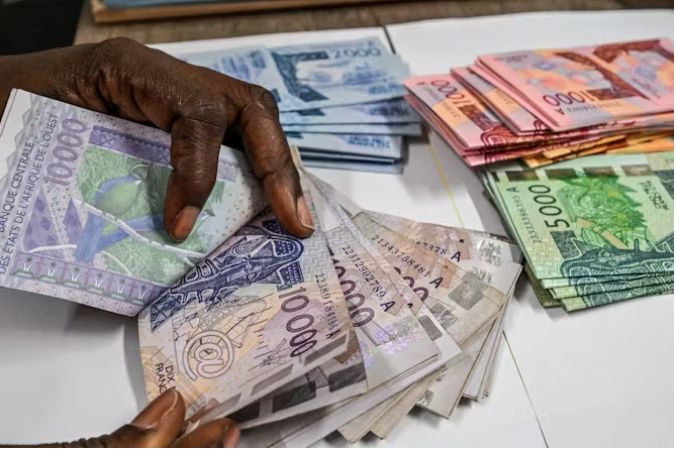
By Kai Koddenbrock
At no point in history has the CFA franc – the name of a colonial currency used in west and central African countries belonging to the franc zone – been closer to its demise. Senegal has overwhelmingly voted for leftwing Pastef candidate Bassirou Diomaye Faye (and his former party leader Ousmane Sonko) while the coup governments in Mali, Burkina Faso and Niger have been talking about leaving the CFA franc for some time.
Senegal under outgoing president Macky Sall was a pillar of the longstanding French attempt to remain influential among its former colonies, often named “Francafrique”. Now newly elected Faye, under the moniker of “Left Panafricanism”, has vowed to make his country more sovereign in food, energy and finance. Never before have four west African governments, including one of the regional leaders, Senegal, been simultaneously eager and ready to get out of the neo-colonial stranglehold of the CFA franc. The CFA franc zone was founded by then colonial power France after the second world war. Its aim was to ensure a continuously cheap influx of resources into France.
The zone is divided into two. The west African CFA franc zone has eight members: Mali, Niger, Burkina Faso, Senegal, Côte d’Ivoire, Benin, Togo and Guinea-Bissau. The central African zone has six: Cameroon, Gabon, Republic of Congo, Central African Republic, Chad and Equatorial Guinea.
Popular mobilisation against the currency has been intense in recent years in west Africa. This led to cosmetic changes to the currency arrangements. For example in 2019, French president Emmanuel Macron and the sitting president of Côte d’Ivoire, Alassane Ouattara, announced the withdrawal of French staff from some of the regional central bank’s decision-making bodies. They also waived the requirement – much maligned on the continent – to store 50% of all reserves in Paris as a guarantee to the former colonial power that they wouldn’t be wasted on irresponsible fiscal expansion. Overall, however, the CFA franc has remained more or less the same and France has not been willing to leave the arrangement of its own accord. The old colonial attachment and supposed developmental benevolence has carried the day.
But the conditions for major change are in place. The Alliance of Sahel States between the junta-led governments of Mali, Burkina Faso and Niger has stated its intention to introduce the “Sahel” as a new regional currency. Whether this initiative – and the Senegalese plan for a national currency – will amount to a full break-up of the CFA franc zone and its terminal decline will depend on how well they plan and execute the transition to several new currencies or a new one without any French involvement.
A hard road ahead
Historically, as shown by Fanny Pigeaud and Ndongo Sylla in their book Africa’s Last Colonial Currency: The CFA Franc Story, serious attempts at leaving the CFA franc since its inception in 1948 have been sabotaged by France. For example, Guinea was flooded by counterfeit banknotes when it left the CFA franc in the 1960s. Mali was put under pressure to rejoin the CFA franc after its departure in 1967. It returned into the fold in 1984. In 2011, Ivorian president Laurent Gbagbo, who had been considering pulling out of the CFA franc, was made to step down after controversial elections with the help of a military intervention force. He was then sent to the International Criminal Court before being acquitted 10 years later.
France went further in 2011 – a case countries wanting to make the next attempt at leaving the CFA franc should be cognisant of. It used its seat on the Central Bank of West African States decision-making bodies to block Côte d’Ivoire from being refinanced by the bank. It also induced the subsidiaries of BNP Paribas and Societe Generale to temporarily close their branches. Leaving the CFA franc has thus historically come with a high risk of French sabotage. But the constellation of forces has shifted and west African governments can better prepare this time. If they join forces – and Côte d’Ivoire votes for a less France-dependent president in the presidential elections in 2025 – the end of the west African CFA franc may indeed be near.
The trust factor
The stability and legitimacy of a currency depend primarily on trust. The users of a currency (people and corporations) need to trust that its price is more or less stable. This includes a reasonably low rate of inflation, and engagement in growth-inducing economic activity. Periods of high inflation and hyper inflation have always been the result of a serious economic crisis in which trust was absent.
Monetary stability thus depends on social and macroeconomic stability. This, in turn, is the result of how well governmental policies and domestic and world market processes align. A government that is seen to have a plan and is able to adapt to and steer economic pressure goes a long way in creating trust. And, by implication, it makes a new currency less prone to speculative attack or massive devaluation.
In Senegal, Pastef’s election program had a roadmap towards leaving the CFA franc and setting up a national currency. Among the key steps are:
- creating a national central bank
- refinancing of state expenditure at 0%
- de-monetising gold and preventing its import and export to build up a gold reserve
- repatriating gold reserves still stored in Paris and all over the world
- reprofiling public debt and cancelling private debt through monetary fiat
- installing a deposit insurance scheme for small savers
- building a national stock exchange.
Finally, the new currency will be floating and non-convertible or semi-convertible to shield it from speculative attacks. This menu is similar to some of the strategies China has employed over the last decades to maintain government control over the economy and shield the Chinese economic growth path from foreign – in other words speculative – interference. The success of such a strategy depends to a large degree on mobilising domestic financial and real domestic resources. And, in the absence of China’s massive domestic market, building regional economic complementarities.
The strategic challenge for Diomaye will thus be to enlist a sufficiently large group of small business people, landowners and power-brokers around Mouride and Tidjaniyya Muslim brotherhoods and the capitalist class in Senegal to his economically transformative project. This will be a sizeable challenge in the face of upcoming export revenues from gas and oil – contracts Pastef has vowed to renegotiate – and an overall economic structure that is not yet domestic market oriented.
A national currency could support this shift in focus towards the well-being of the Senegalese people. This is because its logic would be to reorient the government towards the domestic economy and its people. Imports and easy repatriation of earnings by foreign corporations, which are some of the main effects of the often overvalued CFA franc, would become more difficult.
Make or break factors
The reaction to Faye’s agenda by the International Monetary Fund, the World Bank and other donors and creditors will be crucial to watch. To what extent the new Senegalese government is prepared to dispense with their sizeable sums in aid and credits remains to be seen. Niger recently did dispense with them and reduced its budget by 40% as aid was frozen.
Overall, Senegal and the Sahel governments are in a stronger position globally than ever before. The African continent is seen as essential to ensure the energy transition in Europe as well as its diversification of oil and gas supply. And western military, diplomatic and trade hegemony on the continent is being challenged by China and Russia as well as the United Arab Emirates, Qatar and Turkey. If Senegal and the Sahel governments position the end of the CFA franc well in their overall negotiations with their international partners as well as their domestic capitalist class and opposing political forces, its end may indeed by near.
That will not be the end of the long road towards food, energy and overall economic sovereignty to the benefit of the people. But it will be an important symbolic and material victory against postcolonial interference and meddling. The colonial CFA franc has outlived its usefulness for today’s “Left Panafricanism”. Organising its end is a sizeable challenge, but for the first time in decades is one that can be confronted head on.
Kai Koddenbrock is Professor of Political Economy , Bard College Berlin
Courtesy: The Conversation
BUSINESS & ECONOMY
Inquiry on General Babangida’s Involvement in Conventional Banking despite Introduction of Islamic Finance in Nigeria
Published
2 months agoon
February 13, 2024By
EditorDear Editor,
I hope this letter finds you well. I am writing to express my curiosity and seek clarification on a matter that has caught my attention, specifically pertaining to General Babangida’s involvement in the conventional banking industry despite his role in introducing Islamic finance during the financial reforms of his military government in Nigeria. Vide your special article commemorating his 81st Birthday published in your esteemed news website: https://focus.afrief.org/trending/a-salutary-tribute-to-general-ibrahim-badamasi-babangida-architect-of-islamic-finance-in-nigeria/
It is indeed noteworthy that General Ibrahim Babangida played a pivotal role in shaping the economic landscape of Nigeria by introducing Islamic finance principles. It is fascinating to witness the implementation of Islamic finance in Nigeria, as it promotes principles that align with religious and ethical values. General Babangida’s efforts to introduce this form of finance were undoubtedly commendable, reflecting his commitment to establishing an alternative financial system that adheres to Islamic principles.
However, recent observations suggest his active participation in the conventional banking sector in Nigeria. Certainly, it is intriguing to see General Babangida’s continued involvement in the conventional banking industry, which operates under different principles. While some may argue that his involvement in both sectors is simply a matter of personal choice, it raises questions about the compatibility of his actions with the ideals and principles of Islamic finance. While the former is interest driven, the latter prohibits interest related transactions completely.
I wonder if General Babangida has ever publicly addressed this matter or explained his reasoning behind being active in both sectors. It would be enlightening to hear his perspective on how he reconciles his involvement in conventional banking with his efforts towards promoting Islamic finance. This has raised questions in my mind and perhaps in the minds of others as well.
I am keen to understand the rationale behind General Babangida’s dual engagement in both Islamic finance and conventional banking. Does this reflect a strategic approach to diversify Nigeria’s financial sector, or are there specific reasons behind his involvement in conventional banking despite advocating for Islamic finance principles?
Additionally, it would be interesting to explore the potential impact of his dual involvement on the perception and growth of Islamic finance in Nigeria. Does his presence in the conventional banking industry hinder the progress of Islamic finance, or does it have the potential to bridge the gap between the two sectors?
I believe that delving into these questions could provide valuable insights and generate constructive discussions within the Islamic finance community in Nigeria. By shedding light on General Babangida’s dual involvement and the potential implications, we can further enhance our understanding of the challenges and opportunities faced by the Islamic economy in our country.
Thank you for considering my questions, and I look forward to reading more about this topic in your esteemed Focus on Islamic Economy.
Sincerely,
Abba Musa Mamman Lagos
Kaduna

Promoting Halal Entrepreneurship Among Students: Opportunities and Challenges

Dangote, Air Peace and the Patriotism of Capital

EARTH DAY 2024: Packaging Is the Biggest Driver of Global Plastics Use
Topics
- AGRIBUSINESS & AGRICULTURE
- BUSINESS & ECONOMY
- DIGITAL ECONOMY & TECHNOLOGY
- EDITORIAL
- ENERGY
- EVENTS & ANNOUNCEMENTS
- HALAL ECONOMY
- HEALTH & EDUCATION
- IN CASE YOU MISSED IT
- INTERNATIONAL POLITICS
- ISLAMIC FINANCE & CAPITAL MARKETS
- KNOWLEDGE CENTRE, CULTURE & INTERVIEWS
- OBITUARY
- OPINION
- PROFILE
- PUBLICATIONS
- SPECIAL FEATURES/ECONOMIC FOOTPRINTS
- SPECIAL REPORTS
- SUSTAINABILITY & CLIMATE CHANGE
- THIS WEEK'S TOP STORIES
- TRENDING
- UNCATEGORIZED
- UNITED NATIONS SDGS
Trending
-

 TRENDING11 months ago
TRENDING11 months agoAFRIEF Congratulates New Zamfara State Governor
-

 PROFILE8 months ago
PROFILE8 months agoA Salutary Tribute to General Ibrahim Badamasi Babangida: Architect of Islamic Finance in Nigeria
-
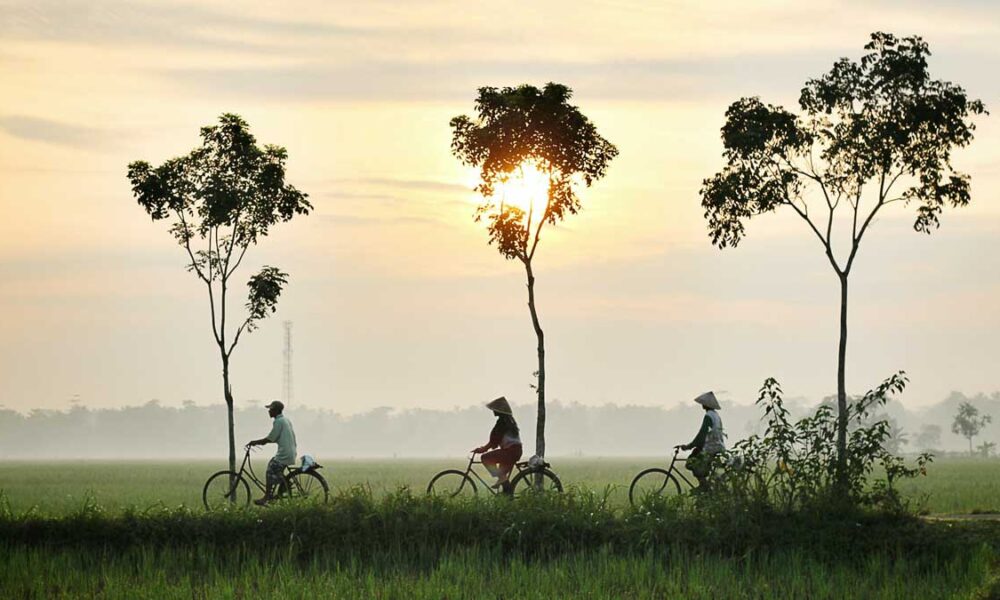
 BUSINESS & ECONOMY3 years ago
BUSINESS & ECONOMY3 years agoClimate Policy In Indonesia: An Unending Progress For The Future Generation
-
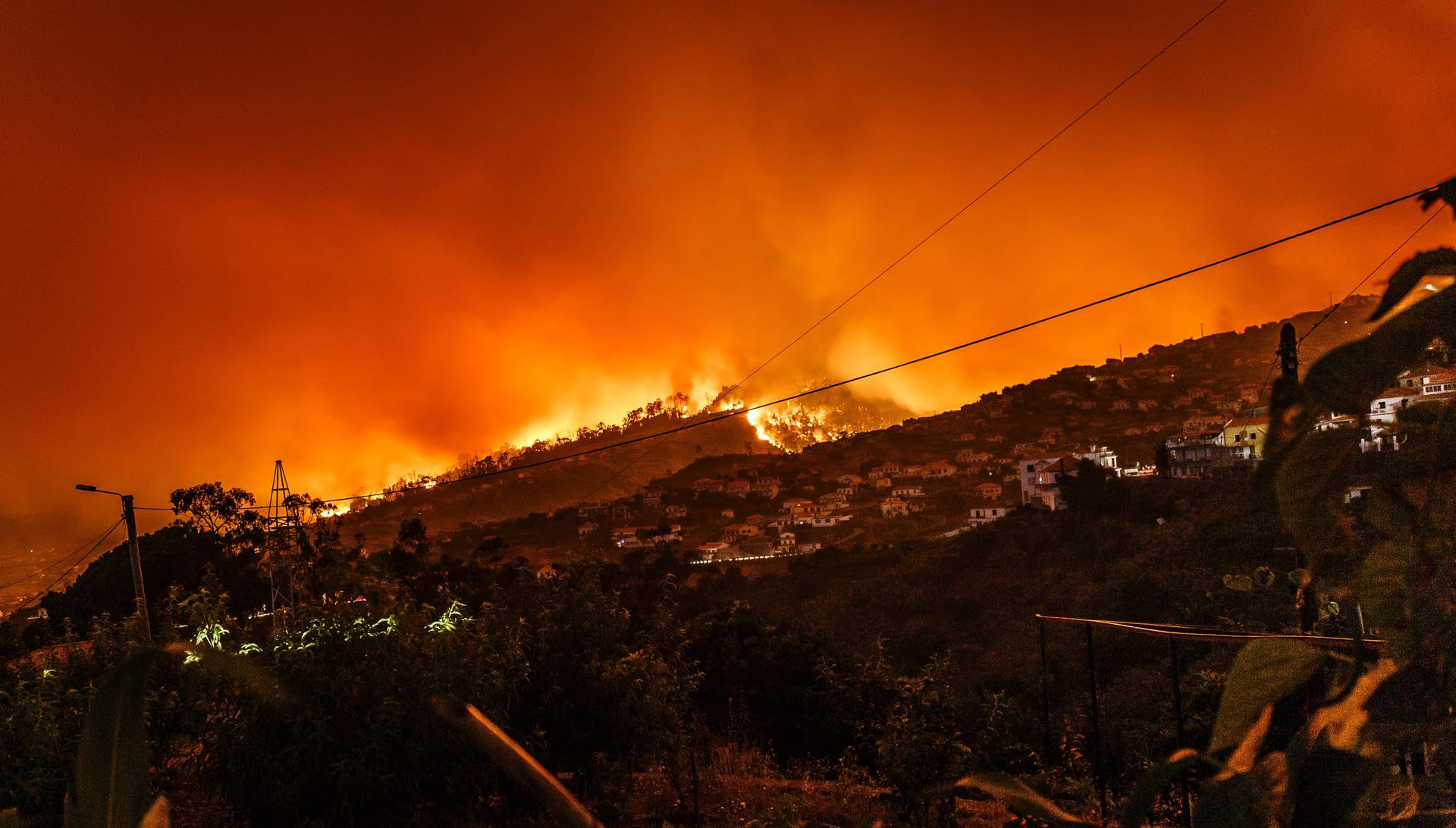
 BUSINESS & ECONOMY3 years ago
BUSINESS & ECONOMY3 years agoThe Climate Crisis is Now ‘Code Red’: We Can’t Afford to Wait Any Longer
-
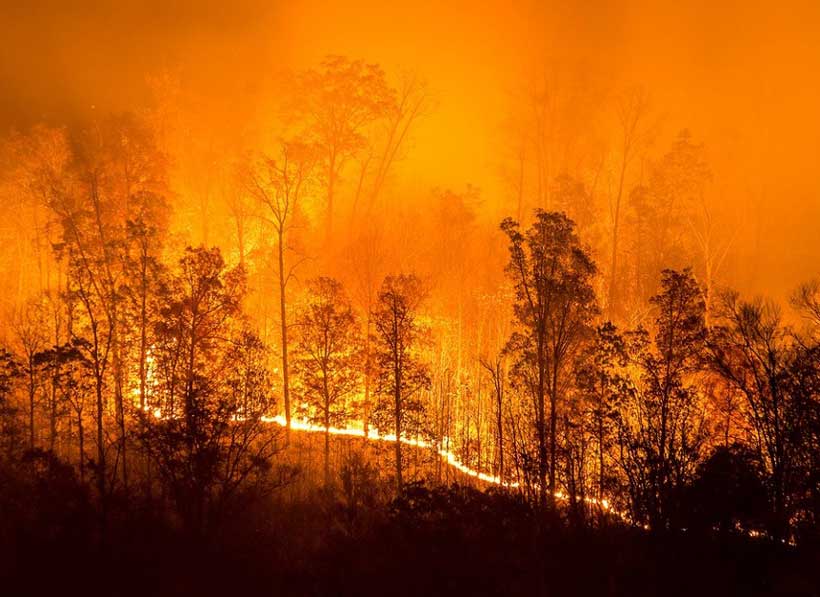
 BUSINESS & ECONOMY3 years ago
BUSINESS & ECONOMY3 years agoIPCC report: ‘Code red’ for human driven global heating
-

 HALAL ECONOMY10 months ago
HALAL ECONOMY10 months agoRevolutionizing Halal Education Through Technology
-

 BUSINESS & ECONOMY3 years ago
BUSINESS & ECONOMY3 years agoThe Black sea protection initiative: What should we remember?
-
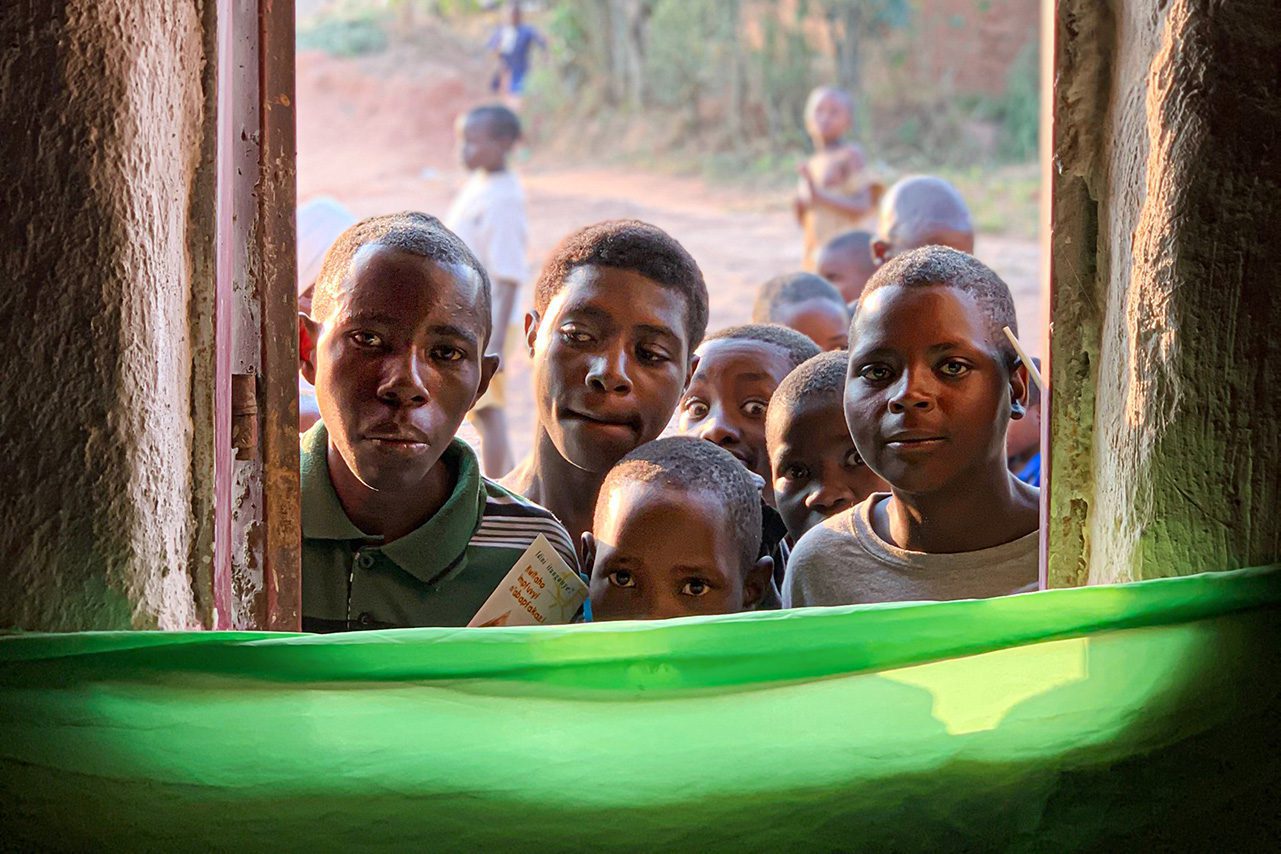
 BUSINESS & ECONOMY2 years ago
BUSINESS & ECONOMY2 years agoDistributed Infrastructure: A Solution to Africa’s Urbanization

